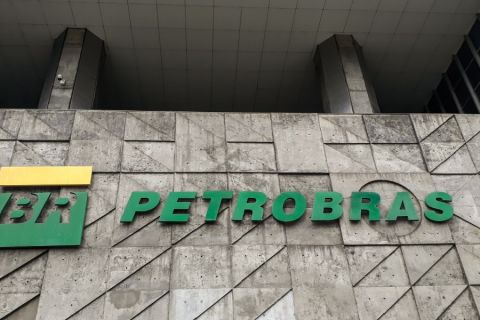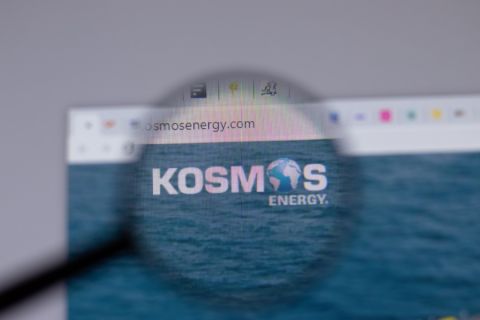
Despite minor setbacks at two Houston oil and gas exploration and production companies, analysts say both are playing to their strengths and managing their weaknesses.
Houston’s EOG Resources Inc. (NYSE: EOG) impressed analysts with a “stellar quarter,” reporting Nov. 5 third-quarter net income of $355.5 million, or $1.31 per share. That compares to third-quarter 2011 net income of $540.9 million, or $2.01 per share.
In 2013, projected capital expenditures (capex) may be in the range of $6.9 billion to $7 billion, including more capital shifting to the Eagle Ford and Bakken shales, said David Tameron, Wells Fargo Securities senior analyst.
Tameron rated EOG “Outperform.”
EOG projects double-digit liquids growth, with Trinidad natural gas flat and North American natural gas down 9%. This is likely unsurprising given EOG's prior commentary about dry-gas spend in 2013, down to $100 million from $700 million, Tameron said. He projected “overall corporate growth of 8%, resulting in about $880 million outspend, which can easily be funded with the balance sheet.”
The company is expected to slow its fourth-quarter Eagle Ford activity, but will ramp up later in the quarter. Management is targeting about 25 rigs and four completion crews to drill more wells with about the same rig count at a cost of $5.5 million per well, Tameron said. Cost reductions and increases in well count are driven by reduced drilling days, efficiencies, self-sourced sand and some service-cost relief.
Eagle Ford is relatively cash neutral, but Tameron expects it to be be generating excess cash in 2013 and beyond.
Tameron put EOG’s valuation range at $130 to $140 based on estimated net asset value (NAV) of $133.43.
He also noted that in the past five years, EOG has grown through internally generated projects rather than acquisitions. “This has resulted in a much lower overall cost structure for the company, which showed up in industry-leading returns,” he said.
Houston’s Gastar Exploration (NYSE MKT: GST) also received kudos for third-quarter production averaging 38 million cubic feet equivalent per day (MMcfe/d), 3.1% above analyst estimates of 36.9 MMcfe/d and the Bloomberg consensus of 36.5 MMcfe/d, said Gabriele Sorbara, an Imperial Capital LLC analyst.
Production is attributable to a catch-up production of approximately 1.4 MMcfe/d for its Belin #1 net revenue interest based on an updated division order title opinion and property assignment, Sorbara said.
Sorbara maintained GST’s “Outperform” rating, but reduced the one-year price target to $2 from $3, as shares may be depressed, though cheap, for a period of six to 12 months.
GST adjusted net income attributable to Gastar's common shareholders was breakeven for the third quarter, excluding non-cash impairment charges and unrealized hedging gains. Adding the non-cash impairment of natural gas and oil properties of $78.1 million and an unrealized hedging loss of $5.4 million, reported net loss attributable to Gastar's common shares for the third quarter was $83.5 million, or $1.31 per diluted common share.
In 2011, adjusted net loss was $1.4 million, or $0.02 per diluted common share, for the same period. Reported net income attributable to Gastar's common shareholders was $1 million, or $0.02 per diluted share, in the third quarter of 2011.
Sorbara said GST continues to execute in the Marcellus, but fourth-quarter production guidance of 38 to 40 MMcfe/d is light relative to Sorbara’s previous estimate of 43.2 MMcfe/d.
He reduced fourth-quarter production projections to 39.7 MMcfe/d.
“Investors may be disappointed the company has not disclosed results (first well still flowing back) or the details of its Midcontinent new venture, where it has accumulated 12,500 net acres,” Sorbara said.
Additional information is expected from a Nov. 8 earnings call, he said.
Recommended Reading
Petrobras Sending Nearly Half of Oil Exports to China
2024-04-30 - Conflict in the Middle East has enabled Brazil’s state-owned Petrobras to change the flow of its oil exports, with China being the primary beneficiary, followed by Europe.
E&P Highlights: April 29, 2024
2024-04-29 - Here’s a roundup of the latest E&P headlines, including a new contract award and drilling technology.
Kosmos Energy’s RBL Increased, Maturity Date Extended
2024-04-29 - Kosmos Energy’s reserve-based lending facility’s size has been increased by about 8% to $1.35 billion from $1.25 billion, with current commitments of approximately $1.2 billion.
Barnett & Beyond: Marathon, Oxy, Peers Testing Deeper Permian Zones
2024-04-29 - Marathon Oil, Occidental, Continental Resources and others are reaching under the Permian’s popular benches for new drilling locations. Analysts think there are areas of the basin where the Permian’s deeper zones can compete for capital.
TotalEnergies Starts Production at Akpo West Offshore Nigeria
2024-02-07 - Subsea tieback expected to add 14,000 bbl/d of condensate by mid-year, and up to 4 MMcm/d of gas by 2028.





